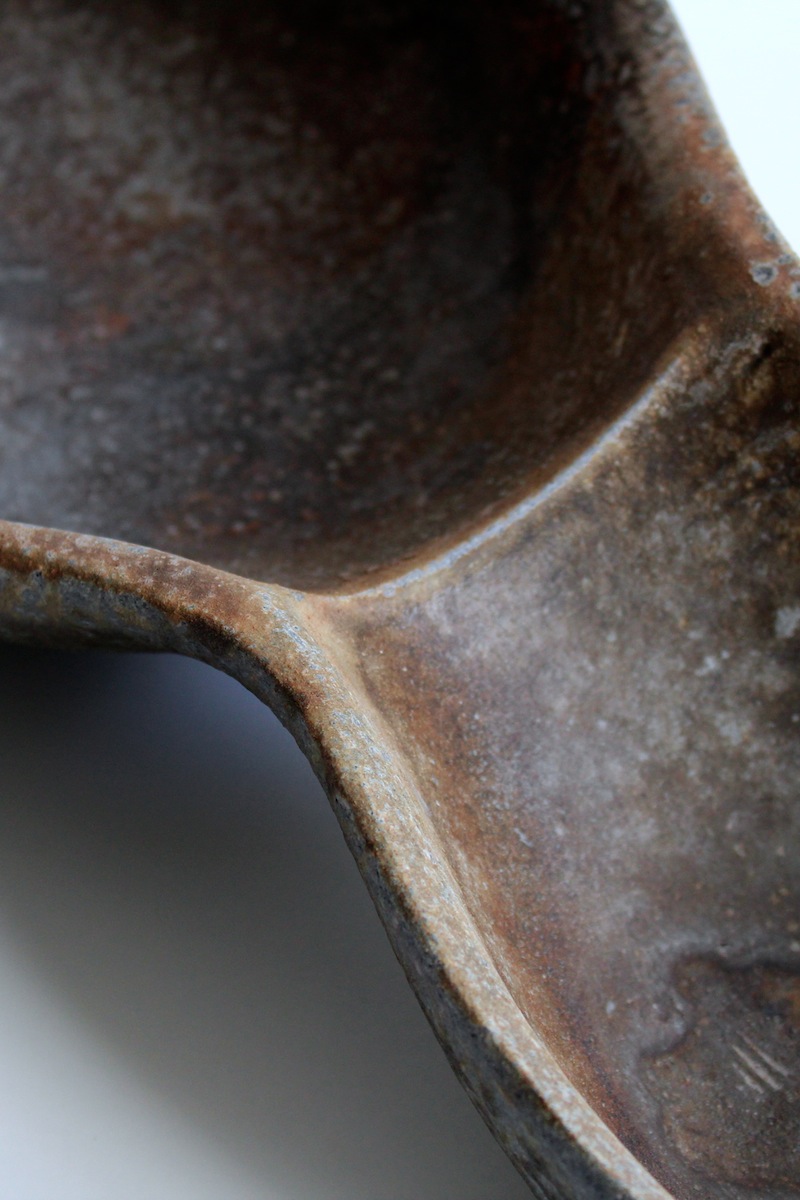colorways
silk
hand-processed Minnesota brick clay, kaolin, and taconite sand
2240°F [1227°C], oxidized electric
wet-polished with 200 grit diamond sandpaper, sealed with a light beeswax varnish
focus on material
The clay used in this collection naturally fires to a warm, yellow-orange color, without the addition of stain or pigment. Using a clay with such inherently beautiful properties gives me a responsibility to uphold its native characteristics. In an effort to preserve the depth of surface on these works, I do not glaze the exterior. I find that glazing would not only obstruct the appearance of the stones in the clay, it would create a cold, hard gloss that would prove uninviting to the touch. In order to properly honor the allure of the clay, I simply finish the work by polishing the surface to expose the clay’s innate luster. The sheen, texture and color of this polished surface all reference the warm, raw tones of natural silk.
sinew
porcelain
2260°F [1238°C], oxidized electric
wet-polished with 200 grit diamond sandpaper
focus on form
Creating with porcelain is a way for me to pare my work down to what I find most essential- graceful form. Viewers of my work often see the clay before appreciating the piece itself. While I have a deep respect for raw, hand-processed materials, I find that working with pure porcelain is like working with a blank canvas free from other distractions. With this collection, I want my work to be perceived as intrinsically compelling because of my forms- not necessarily because of the material from which it is made. This collection includes work made with pure, hand-polished porcelain, work made with pure porcelain that has been lightly clear-glazed, and work made with a raw porcelain derived from foraged clays and minerals. The name sinew alludes to this collection’s feeling of strength, connectivity and delicacy.
sinter
hand-processed Minnesota ball clay, kaolin, and silica
~2300°F [1260°C], reduced woodfire
lightly sanded with 200 grit diamond sandpaper, sealed with mineral oil
focus on surface
Woodfiring has been revered for hundreds years for its often unpredictable results. There are many variables that can affect the outcome of woodfired ceramics, but I try to curate these variables to gain as much control of the process as possible. When loading, I aim to place my work in the coolest areas of the kiln; areas that see more flame movement and ember contact. I strive for matte surfaces and warm to black tones on my work, but sometimes also encourage charcoal buildup for a mossy green-blue texture. Using locally sourced clays in the wood kiln adds another layer of intensity to the work. The naturally occurring stones melt at different temperatures and interact with the flame and ash in unique ways.


